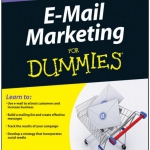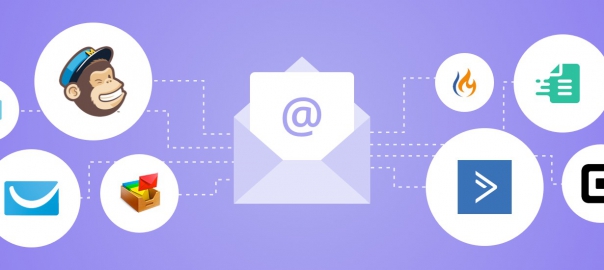Developing e-mail content in accordance with consumer interaction
Your e-mail content should match how consumers tend to interact with the media you use so that your audience can easily internalize and take action on your message.
Consider the following comparison between using e-mail to deliver a message and using a billboard to deliver a message.
Imagine planning to put up a billboard next to the highway where people drive by at 65 miles per hour. You aren’t likely to get good results if your billboard message includes two paragraphs of text along with an office phone number, cell phone number, fax number, e-mail address, and detailed directions to your office because no one driving by on the highway can internalize such a detailed message so quickly.
And some of the information on the billboard is also difficult for people to take action on even if the billboard’s layout makes it easy for drivers to see. For example, drivers aren’t likely to send an e-mail to an unfamiliar e-mail address in the body of the billboard message because (hopefully) the drivers aren’t in front of their computers then. People interact with e-mails in much the same way that they interact with billboards because people tend to hastily scan through the content of an e-mail to see whether anything is worth responding to or reading in more detail.
In contrast, people take action on e-mails much differently than they do from billboards and other indirect media. People who see a billboard have to employ another form of media (such as a mobile phone or a computer) to make contact with the related business, but people can actively respond to e-mail messages by using the media itself.
For example, people can easily respond to an e-mail by
- Clicking a link in the body of the e-mail Downloading a file linked within the e-mail
- Forwarding or sharing the e-mail
- Replying to the e-mail
- Clicking a phone number in a mobile e-mail
- Showing the e-mail on a mobile device
- Printing the e-mail
- Saving the e-mail to their inboxes
Table of Contents
Evaluating your messages
Continuously tracking the effect your e-mail messages have can help you refine your strategy and make educated changes while you determine future messages. Message evaluation begins by stating measurable objectives. It then continues while you track and measure your results to determine whether your objectives are achieved. Measurable goals could include the following:
- Increasing the number of Web site visitors by a certain amount
- Increasing the number of orders or purchases by a certain amount
- Receiving feedback and information on a specific issue
- Increasing event attendance by a certain number
- Changing opinions or perceptions over a set period of time
- Increasing the size of your contact database by a certain number
Tracking and measuring your message results can be a snap with an E-Mail Marketing Provider (EMP). (Read more about EMPs later in this chapter.) An EMP tells you exactly who opens your e-mail and who clicks the links in your e-mail message.
Not all your e-mail evaluation has to be based on clicks, however. For example, you might ask people to phone you and request more information. Then, you can evaluate your message based on how many phone calls you receive and what people say when they call. Other methods of tracking and measurement include the following:
Ask people to print your e-mail message or show the message on a mobile device to redeem an offer. You can then count the number of customers who show the e-mail to your store or office.
Ask people to mention your message when e-mailing a reply. You can track how many e-mails mention the message.
Ask people to fill out an online form. You can analyze the data collected from the forms.
Ask people to share your e-mail with friends and colleagues. You can track how many new subscribers or social media followers you receive as a result of the shared e-mails.
Track activity in the product lines and services mentioned in your message. You can calculate the difference between the average level of activity and the change in activity.
Reaping the Benefits of E-Mail Marketing
E-mail might seem like a cost-effective way to deliver your marketing messages. For the most part, it is cost effective because you can send personalized, targeted, and interest-specific messages to a large number of people. The value of e-mail marketing doesn’t end with the cost, however. E-mail marketing has certain advantages over other forms of direct marketing for your business and for the people who request and receive your emails.
Asking for immediate action
You won’t have to wait around too long to determine whether an e-mail message was successful. According to MarketingSherpa’s (www.marketingsherpa.com) “Email Marketing Benchmark Report,” 80 percent of the e-mail you send is opened in the first 48 hours after delivery.
After an e-mail is opened, it doesn’t take long for your audience to take immediate action because people can take action on an e-mail with one click of the mouse. Immediate actions include
- Opening and reading the e-mail
- Clicking a link
- Clicking a Reply button
- Forwarding or sharing
- Printing the e-mail
- Saving the e-mail
Gathering feedback
E-mail is a two-way form of communication, and even commercial e-mail can be used to gather feedback and responses from your audience. People can easily reply to e-mails, and many consumers love to share their opinions when it’s easy for them to do so. Feedback from e-mails comes in two basic categories:
Stated feedback happens when someone
- Fills out an online form
- Fills out an online survey
- Sends a reply or makes a comment
Behavioral feedback happens when you track
- Clicks on links
- E-mail open rates
- E-mails shared with friends
Staying top-of-mind
If you send periodic e-mails with valuable content, people who aren’t ready to buy right away are more likely to remember you and your business when they become ready to buy. If your content is valuable enough to save, your prospects and customers might even create tags with your company name on it and start filing your e-mails in a special folder outside the regular inbox for future reference. When they pull them out to read again, your message is communicated again. Here are some ways that e-mail can be used for top-of-mind awareness and future reference: Archive your e-mail newsletters on your Web site.
- Share your e-mail content on social media sites.
- Ask people to save your e-mails to a folder in their e-mail program.
- Ask people to print your e-mails and post them.
- Print your e-mails and place them in a flip book on your retail store counter or desk in your office so you can refer to recent offers and show samples of the value of your e-mail list.





